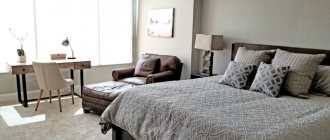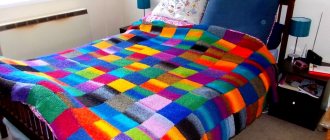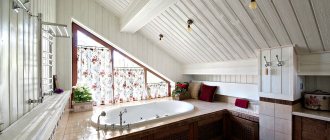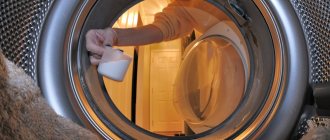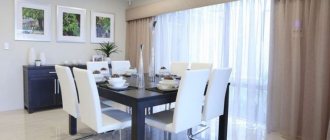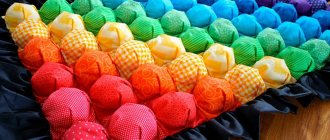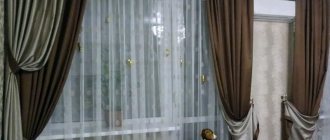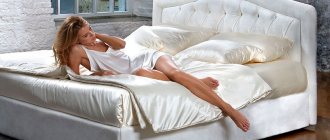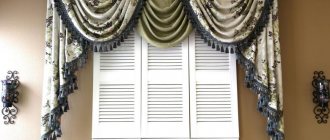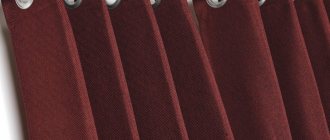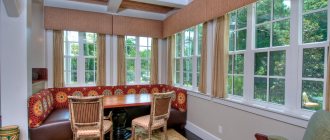The right fabric for a bedspread can transform even a modest bedroom. Today, stores offer a wide selection of textiles for needlewomen, and it’s easy to get confused in such a variety. If you do not want to be disappointed in your purchase, evaluate not only the aesthetic appeal of the product, but also its performance characteristics. We invite you to get acquainted with the most popular fabrics that are used for sewing bedspreads.
Choosing material
Practicality is an important criterion that must be taken into account when searching for a suitable bedspread. The item must retain its “marketable appearance” for a long time: be strong enough not to be afraid of damage associated with use and care, not change color saturation, not wrinkle too much and keep its original shape well.
Different families have their own way of life, so not in every bedroom the bedspread will be subject to active mechanical stress. If it is not customary in the house to lie/sit on a made bed, when choosing a material, you can focus more on aesthetic needs. For example, prefer something light, flowing and delicate to non-marking, wear-resistant fabric.
Each fabric used to create bedspreads has its own obvious advantages and some disadvantages.
Microfiber
Artificial fabric with excellent characteristics. With a sufficiently high density, it “breathes” perfectly, so the bed under the blanket will not be cold and damp even on the dampest day. Modern technologies make it possible to create such textile products visually and to the touch to imitate expensive natural materials - cashmere, silk, velvet. Additional advantages of microfiber are high strength, wrinkle resistance, durability, and easy care.
The main disadvantage is the ability to become electrified. The bedspread is likely to attract dust and hairs. Some products may spark, so it is especially important to choose a trusted manufacturer with a high reputation. As for the cost, the price range is quite wide: from several hundred to 18-20 thousand rubles, depending on the quality.
Acrylic
It is no coincidence that acrylic fibers are called artificial wool; they are really similar. And yet, this is 100% synthetic - just like microfiber, so the pros and cons of the materials have a lot in common. Acrylic is resistant to mechanical damage, it practically does not wrinkle or deform during use, and is also very pleasant to the touch. The fabric is considered hypoallergenic and can be safely used in a child's bedroom.
The fibers are beautifully dyed in a variety of colors, which “play” beautifully in different lighting conditions and are not washed out by water, so the bedspread will retain its brightness even after hundreds of washes. The cost of products varies from 5 hundred to 15 thousand rubles, depending on the manufacturer and quality.
A common disadvantage of synthetic products is the ability to accumulate static electricity (especially at low air humidity). Acrylic “breathes” worse than microfiber, so it is not recommended to cover yourself with such a product - in the bedroom it serves only decorative functions. And you shouldn't have breakfast in bed! Acrylic is easy to wash, but it is unlikely that you will be able to remove a grease stain from it without dry cleaning.
Interesting fact: acrylic fabrics were first produced shortly after the end of World War II. However, at that time this discovery did not find wide practical application. The problem is that chemists have learned how to create artificial fibers, but not how to achieve long-lasting coloring. It took almost twenty years for people to start making elegant things from nondescript synthetic material that do not lose their brightness even after numerous washes.
Fleece
Another synthetic fiber that captivates with its softness and unique lightness. Visually and tactilely it resembles products made from sheep’s wool, but in comparison it seems simply weightless. It is not capable of causing an allergic reaction and prevents the proliferation of pathogenic microorganisms. It warms perfectly, has excellent air permeability, and dries quickly. The material is elastic, holds its shape and color well - the colors hardly fade over time.
It is very fortunate that the fleece blanket is easy to wash - after all, it is recommended to do this more often. Otherwise (due to the common ability of synthetics to become electrified), it will quickly gather dust. The material is afraid of high temperatures; excessive proximity to batteries and heaters can damage it, and in some cases even cause a fire. The main visual drawback is the tendency to form small pellets. This usually affects the cheapest products. Depending on the size and quality, the cost of bedspreads can start from literally 200 rubles and reach 15-17 thousand.
Fur
Fur in the bedroom is luxurious! It is clear that natural chinchilla or mink is available to a few fans of such delicacy. You can’t lie on such a bedspread, and it will require very careful, professional care. It’s good that there are synthetic analogues that satisfy the tastes of the most sophisticated aesthetes. In addition, faux fur does not cause allergies. You can easily find a model of any color and with different lengths of pile.
Now about the shortcomings. These include low wear resistance (compared to other synthetic materials) and high electrification ability. The fur blanket is quite voluminous and takes up a lot of space when folded. Another disadvantage is the price of such bedspreads (the lowest limit for the cost of quality products is somewhere around ten thousand rubles).
Viscose
Since cellulose is used to create viscose, this material is a cross between synthetics and natural fabrics. It is not surprising that it is very often used for sewing bedspreads. Such a product will be both durable and lightweight, hygroscopic and breathable. It does not electrify, holds its shape, and seems very comfortable to the touch. Modern technologies make it possible to create high-quality imitation of the most popular and expensive materials from viscose - from cool silk to cozy wool.
The product requires careful handling: in the sun it can fade, lose its brightness, and when ironing it can easily be burned. But the main disadvantage of viscose is its tendency to deform and shrink after washing. To avoid this, it is advised to choose bedspreads made of viscose with the addition of a small amount of synthetic fibers. The price, with high quality, is quite budgetary - about 3-4 thousand rubles.
Atlas
Satin fabric can be created from artificial or natural fibers. The shine for which designers value material is provided not by the raw materials, but by the peculiarity of the weave of the threads. The more synthetics in the composition, the stronger the material, but at the same time it acquires the ability to become electrified. The main advantages of satin are its radiant beauty and tactile sensation of coolness.
The downside is that the fabric requires very careful handling. A satin bedspread is easily damaged - contact with rough objects or animal claws can cause ugly puffs and dull spots to form on its surface. As for the price of the product, it depends on what fibers were used. An item made of natural silk satin will cost fifty thousand, and a synthetic analogue will cost 1.5-2 thousand rubles.
Tapestry
Another fabric, the quality and cost of which is determined by the fibers used. Most often, a modern tapestry is an interweaving of natural threads (cotton, linen, wool) and polyester. If there are no artificial additives in the composition at all, the product will not be very durable. One hundred percent synthetics will be cheaper and will improve in wear resistance, but will never be as visually luxurious and tactilely pleasant. With a fifty-fifty or so combination, the bedspread will be dense and thick enough (even without any filler). The colors do not fade, the product is not deformed.
There are downsides to leaving. For example, difficulty removing stains. If you spill coffee or red wine on such a bedspread, you will not be able to remove the stain yourself. And in general, washing is not so easy - when wet, the tapestry becomes very heavy. Due to its diversity, the product will not fit into any interior; this should also be taken into account when choosing. Prices for such things vary (taking into account the composition) from five hundred to ten thousand rubles.
Bamboo
Bamboo fiber is based on natural raw materials that have undergone specific chemical treatment - in this way it resembles viscose. An additional advantage is the high content of biologically active antibacterial substances, which do not disappear anywhere after the plant is transformed into tissue. The material is environmentally friendly, durable, and not subject to deformation. This blanket does not absorb foreign odors, does not become electrified, and literally repels dirt.
According to manufacturers and designers, it is impossible to find significant shortcomings in bamboo textiles. The price of these products is quite affordable: a nice, high-quality bedspread without filling will cost 3-5 thousand rubles, although there are also branded items on the market that are several times more expensive.
Interesting fact: in many Asian countries, bamboo is considered a weed that is very difficult to root out. The point is its rapid growth. Completely cut stems continue to stretch upward and within a day they rise a meter above the ground. Thanks to this feature of bamboo, there is no doubt: the modern textile industry is provided with excellent natural raw materials for many decades to come!
Wool/Jacquard
The main advantage of natural wool is its ability to warm and give comfort. When making bedspreads, wool jacquard is usually used, which is the result of a peculiar interweaving of fibers. The pattern on the product is double-sided; this design is an additional bonus when decorating the interior of a room in a Scandinavian or Art Nouveau style. Visually, the bedspread looks rich, emphasizing the ideal taste of the owner. Doesn't fade at all. Unfortunately, real wool jacquard is not cheap; its cost usually ranges from 8 to 30 thousand rubles.
Despite the beauty and comfort, a product made from natural wool has important disadvantages. Firstly, it must be very protected - from dirt, moisture and insects (primarily from moths). It can also cause an allergic reaction in people with individual intolerance.
Cotton
Fabrics made from completely natural raw materials do not accumulate static electricity and do not attract dust. They are tactilely pleasant and visually very diverse. Usually do not cause allergies. Easily painted in any color. Cotton bedspreads can be smooth and patterned, richly decorated or neutral, discreet. Prices are budget, from 1-2 thousand rubles.
Disadvantages: relatively low wear resistance, tendency to fade in bright light, possible deformation (shrinkage) during washing.
Natural silk
The material is great! It looks fabulous, and also has a unique property - it completely expels dust and feather mites, which can be an important reason for allergy sufferers. Requires very careful handling (stains on silk remain even from ordinary water). The main disadvantage is the price, which can amount to tens of thousands of rubles (naturally, if we are talking about natural silk and not its synthetic analogue).
Blankets and bedspreads for your comfort
Best prices for bulk purchases
View in the catalog
We sew a bedspread with our own hands
There are a wide variety of techniques for making a bedspread with your own hands. The most popular ones should be highlighted:
- patchwork;
- counterpane;
- with frill;
- made of pompoms (suitable for a crib).
Patchwork blanket
Patchwork style bedspread: step by step instructions
To make such a product we will need the following:
- sewing machine;
- threads, needles;
- fabric - patchwork involves the use of fragments of material, so even old jeans and sweaters are suitable for such purposes;
You can read about how to sew a blanket from old jeans with your own hands in our article.
- lining fabric (since this is a bedspread, you don’t need to use a thick padding polyester lining);
- cardboard - it will be easier to display the pattern of the future drawing on it;
- scissors, chalk;
- iron;
- tape measure.
The following tools and materials will be useful during the work process:
Step 1. First, you need to prepare templates from cardboard. For the bedspread itself, you can use pieces of fabric of any shape, including squares, rectangles, and triangles. However, the simplest shape is a square. This type of blanket is most suitable for beginners.
This is what the square template diagram looks like. It can be displayed on cardboard in any size. Just keep in mind that 1 centimeter is always left as an allowance
Regardless of the choice of one shape or another, it is necessary to leave a few millimeters of allowance
Step 2. Next, you will need to take fabrics of various colors and cut out parts from them exactly according to the chosen template. At the same stage, you have to think about the appearance of the finished product. You can transfer the color scheme to your notebook so as not to get confused.
The pieces should be placed in the order in which they are planned to be sewn together.
Step 3. The next step is to prepare the parts that will be easy to connect together. To do this, it is better to wash all the pieces of the future bedspread with powder and conditioner, then iron them thoroughly. The simplest version of patchwork is considered to be the production of strips that will be easy to connect with each other. This process will only take a few hours, but as a result we will get a single color canvas.
It is necessary to sew the strips exactly according to the width of the finished blanket
Step 4. Now we need to carefully iron the seams on the wrong side of our workpiece. This should be done carefully so as not to wrinkle the bedspread.
Ironing the back side of the bedspread
Step 5. Next, according to the size of the resulting patchwork fabric, you need to cut out the reverse side for our bedspread. For this purpose, it is best to use cotton fabric.
We cut out another part of the bedspread, spreading the fabric on a flat surface
Step 6. Now you should lay the lining fabric on the floor, right side down. Then another piece of fabric (insulation) is placed on it. To keep it on the surface, you can fix it with tape. It is important that the insulation is 5 centimeters less at the edges than other parts.
You will need to put a patchwork fabric on top of this material, after which you should connect all these parts with pins
Step 7. Now you need to sew all these parts together.
A special embroidery foot is used during the work process.
If desired, you can make a decorative edging of the finished blanket using braid, ribbon and other details. Some craftswomen prefer to make a frill from the same material.
Quilted bedspread: step-by-step instructions
This technique allows you to get a product no less beautiful than in the patchwork style. The difference is that solid pieces of fabric are used here, rather than scraps.
During the work we will need the following:
- sewing machines;
- cotton (or any other fabric of your choice) for lining;
- thin insulation;
- edging fabric;
- threads, needles;
- tape measure;
- ruler;
- chalk;
- sample.
Step 1. To begin with, it is recommended to wash all fabric elements (except for insulation). If this is not possible, then you should at least treat the fabric with hot steam from an iron. This must be done so that the blanket does not “shrink” as a result of subsequent washing.
We wash all fabric cuts
Step 2. Now the fabric should be placed on a flat surface. If it is a floor, then it is recommended to wash it first. For the front part of the bedspread, double-sided cotton fabric with a pattern is usually used. It should be of optimal width to eliminate unnecessary seams. From this material you need to cut a square measuring 230x230 centimeters (the dimensions may be different, at your own discretion). Its edges should be finished with an overlocker.
How to choose the right overlocker
Fabric preparation
Step 3. You will also need to cut a square from the lining fabric. Its dimensions will be slightly larger - 240x240 centimeters. The edges are also processed with an overlocker, and the allowances should be smoothed with an iron.
Square of lining fabric
Step 4. Since the stitches will be square, we will need a square template. The size of the square will be 23x23 centimeters. Now we need to use a textile marker and a long ruler to draw out the facing material from the reverse side into squares. You should start from the edge, moving towards the central part. At this stage, you will need to perform all actions with the utmost care. After all the lines have been drawn, you can put this template aside.
Using a square template
Important point! To ensure that the fabric lies flat on the floor, it is recommended to secure it with adhesive tape.
Step 5. Now you need to lay out the lining fabric on the floor and place a thin padding polyester on top of it. These parts must be secured together with large stitches. Now the facing fabric is laid on this blank, lines up. At this stage, you need to make sure that all parts of the fabric are positioned evenly without distortion.
Lay out all the layers of fabric one by one
Step 6. Now you can connect all parts of the future bedspread with light threads and a needle. You should sew from the middle, first in one direction and then in the other.
Sew the parts together
Important point! When you baste, try to avoid knots so that the threads can be easily removed.
Step 7. Now we need to quilt the blanket using a sewing machine. You should also stitch from the middle to the edges. First you will need to make all the transverse stitches, and only then the longitudinal ones. In this way, you should quilt all the free areas of the bedspread.
Sewing the quilt pieces using a sewing machine
For greater convenience, you need to fold the edges of the bedspread towards the middle
In addition, you should place a chair next to the sewing machine to fold the finished product. The sides of the blanket should be trimmed using the same long ruler. Excess material can be cut off with scissors.
Important point! The product must be stitched exactly according to the markings. In this case, it is better to slightly tighten the fabric.
Step 8. Now all that remains is to attach the fabric edging to the bedspread and carefully smooth it with an iron.
Sew the edging to the product
How to make a frill for a bedspread?
Quite often, this type of blanket decoration is used if the product has uneven corners. To get started we will need:
- choose a plain material that will match the overall design of the blanket;
- In order to buy the optimal amount of fabric, everything should be taken into account, including the features of the corners and the width of the gather.
Important point! To create a frill pattern, you do not need to use only a whole piece of fabric. You can even use small pieces of fabric that will have to be sewn together (you will have to think about how to hide such seams).
Step-by-step instruction
Step 1. First of all, we need to take a ready-made quilted bedspread and make a pattern according to its dimensions.
Take the finished bedspread
Step 2. The next step is to make a edging pattern. To do this, you need to pin the material for the frill around the 100 centimeter perimeter. Now this fabric needs to be detached and measured.
We attach the material with pins
Thanks to the work we have done, we know how much fabric is required for 100 centimeters of bedspread. Now all that remains is to multiply the resulting value by the remaining length.
Step 3. It is necessary to cut the material for the frill into several parts that can be easily sewn together. They can be processed using an overlocker.
Cutting out the frills
Step 4: To finish, all you need to do is topstitch the folds of the frill and then sew this ribbon to the finished quilt.
Sew the frill to the blanket
Video - Bedspread with frill: making
Making a blanket from pompoms for a child: step-by-step instructions
To create such an unusual children's blanket, it is better to take multi-colored yarn (it is advisable to choose the softest, tactilely pleasant options).
In addition, during the work we will need the following:
- a wooden frame on which we will make our bedspread;
- screws - they will need to be screwed onto the frame at a distance of 50 millimeters from each other;
- scissors.
Step 1. First of all, we need to prepare a wooden frame, and then wind rows of acrylic threads onto it one by one. First they are fixed transversely, and then vertically. The end is secured to the top screw and then lowered to the bottom where it wraps around two more screws. Thus, the thread runs along the entire longitudinal side. After which the thread is turned across and led to the very end.
Pull the threads on both sides
Step 2. Now you should fasten the threads of a different bright color, which will serve as the basis of our pompoms.
We fasten threads of a different color
Step 3. Now comes the most difficult part of the work - you need to fix all the intersections with nodes. This is done to ensure that our pompoms do not unravel. At this stage, you should be careful not to miss every detail. Next, to get pompoms, you will have to cut the threads one by one using scissors. An incision is made in the central part between the intersection of the threads.
You need to cut the threads to get fluffy pompoms
In this way you can create a bedspread of any size.
The main advantage of a pompom blanket is that it can be made very quickly. In this matter, the main thing is to maintain consistency.
Video - Sew a bedspread
Choosing the size of the bedspread
Beds are different - low and high, children's and adults, single and double. It is clear that there is no one “ideal” bedspread for all these cases. To choose the right size of a textile product, you must first find out the exact dimensions of your bed: the length, width and height of the mattress with bedding.
Next comes the actual calculation. For example, here is the basic option, in which the bed is not pushed against the wall and does not have backrests. In this case, the cover should hang down on all four sides to completely hide the mattress, falling lower. How long? It depends on individual preferences: if you want the legs or the box to remain visible, add 3-4 cm to the resulting length and width; If you want the bedspread to hang to the floor, add twice the height of the bed to the measurements obtained.
The ideal option in this case is individual tailoring to the specified parameters. But products of standard sizes are usually found on sale. The following table will help you choose the optimal solution (based on a bed about 50 cm in height).
140x200 cm
| Bed type | Bed size | Bedspread size |
| Single bed | 120x200 cm | 140x200 cm - with backrests 140/150/155/160x210/220/235/240 cm - without backrests |
| One and a half ton bed | 150/160/170x200/220/240 cm | |
| Double bed | 160x200 cm | With two backrests - 180x200 cm With one backrest - 180x220cm In the absence of backrests - 180/200/210/215/220/230 x 220/230/235/240/250/270 cm |
| Euro bed | 180x200 cm or 200x200 cm | Euro bedspread: 220/230/240/250/260/270 x 240/250/260/270 cm |
Important point! If the bed on one side is pushed close to the wall, then the corresponding side allowance should be lowered when determining the size of the bedspread.
Deciding on the bedspread model
Even with basic cutting and sewing skills, you can sew a bedspread with your own hands without much difficulty. First, of course, you need to choose the model that best suits the style of the bedroom and the shape of the bed.
The simplest option is a rectangular bedspread with a simple cut. You can make it attractive and stylish with the help of decor. For example, using satin ribbons, cords, braid, lace, decorative stitching, fabric appliqués, embroidery, compositions made of beads and beads.
Bedspreads can be light and flowing, lined or unlined, dense, quilted and even insulated. An excellent solution for the bedroom would be a double-sided option. By placing it one way or the other, you can quickly change the mood in the room. The choice of model largely depends on the taste preferences of the bedroom owners.
Bedspread design options
Which bedspread decor should you prefer? Here, exclusively individual preferences are decided; the designers have no taboos or intrusive recommendations.
Stitch - used for insulated bedspreads. This is a functional decoration that does not allow the filler to get lost during use. Although overall it looks very nice, “at home.”
Frills and flounces are ideal for creating an interior in a romantic style. They add tenderness and comfort to the room. However, this decoration can be not only the same color as the main canvas, but also a contrasting one, drawing attention to the bed. This technique is often used when, with the help of flounces, they want to draw attention to some other decorative element - they make a frill of the same color as the headboard of the bed, curtains, or wallpaper.
Decorative border or fringe - most often used when decorating a bedroom in the Art Nouveau or Empire style. They emphasize the overall luxury and sophistication of the interior.
Embroidery or applique is an interesting design element that is quite popular today, which can be of different sizes and located in the center or on the corner of the bedspread. Very good within the framework of a “rustic” interior or popular country style.
Patchwork - a bedspread made from patches will become a bedroom decoration in itself. A very fashionable solution that is widely used by the most famous designers.
Two-facedness is characteristic of jacquard bedspreads. A convenient way to diversify your interior without spending extra money. Simply turn the fabric “wrong side” up and enjoy the new design.
Textiles for commercial buildings
Fulfilling corporate orders for restaurants, hotels, auditoriums, museums and other commercial facilities is another area of activity of our Interior Atelier.
We offer our customers sewing curtains, installing roller blinds and blinds, including motorized ones, sewing curtains for the stage, making tablecloths and napkins, sewing uniforms for staff, reupholstering and restoring furniture, making covers for chairs and armchairs, as well as textile decoration of outdoor areas for cafes and restaurants.
Commercial facilities are public places that are characterized by high traffic. Therefore, when producing textiles for commercial buildings, it is necessary to take into account increased safety standards and special requirements for the functionality of fabrics.
- How to choose the right fabrics that are non-flammable and retain their properties for a long time?
- How to design the most functional textile design that meets the needs of owners, clients, and sanitation services?
- How to increase the service life of textile products for restaurants, cafes and hotels?
- How to choose the right color and style of uniform for employees, at the same time making it comfortable and emphasizing the corporate identity of the company?
We know the answers to all these questions based on our extensive experience in designing and creating textiles for restaurants, cafes, hotels, shops, concert halls and other commercial facilities.
We offer our corporate clients a wide selection of fabrics and accessories to create unique interiors for their existing and new establishments. And in case of large volumes and ordering additional services for the care of textiles (washing and dry cleaning), we are always ready to provide good bonuses.
What should the bedspread be combined with - how to choose the color and pattern?
The most important condition for thoughtful design is harmony. This means that a bedspread in a bedroom cannot be “on its own”; it must be combined with other interior elements. First of all - with furniture, walls, curtains.
Furniture
The sleeping place and the bedspread are parts of a single composition; they must match each other in style, shade, and mood. There are two ways here: completely copy the color of the visible part of the headboard and repeat it by choosing a textile covering for the bed, or make the right accent using individual decorative elements. For example, with a red leather headboard, you can throw a snow-white bedspread with contrasting red and black diamonds, stripes, and several large scarlet poppies on the bed itself.
The effect will be completely different. In the first arrangement, the bed will not automatically attract attention. This is important if you want to draw attention to other decorative elements - paintings on the wall, an expensive carpet, an elegant dressing table. In the second case, it is the bed that will become the visual center of the interior composition.
Important point! Designers love red, but find it quite complex. This color has an ambiguous effect on the human psyche - it can cause passionate attraction, but in large doses and with constant contemplation it leads to exhaustion of the nervous system. Interior experts advise using scarlet bedspreads only for young people who are in search of their soulmate. But for matrimonial bedrooms and children's rooms it is better to take a less aggressive shade - brick, burgundy or pink.
Walls
The main thing is not to overdo it in the pursuit of originality. If the walls of the room are decorated with patterned wallpaper, stucco, large photographs and reproductions, the bedspread should be chosen in a single color. At the same time, it should be combined in color with some decorative elements, perhaps not the largest and most eye-catching ones: vases on the shelves, picture frames, floor lamp shade.
And vice versa: when decorating the walls in a single color (especially if they are in pastel shades), it is permissible to make the bedspread the only flashy spot. This will give the room a bright, festive look.
Some styles, in particular Scandinavian, give preference to a harmonious combination of walls and home textiles. This means that the bedspread should not differ significantly from the overall tone of the room. Usually light, bleached shades are chosen. But even in this case it is not at all necessary to achieve one hundred percent compliance. For example, a milky or light yellow bed cover is ideal for beige walls.
Curtains
A classic of the genre is the combination of curtains and bedspreads in color and texture. If they are completely monochromatic, you can add more original accents to the bedroom interior - pots with fresh flowers, cute figurines, decorative pillows and other cozy trinkets can play this role.
The second interesting option is the same color, but the difference is in the decor. For example, plain blue curtains on the windows and a blue and gold bedspread on the bed. Expensive, luxurious, stylish. But designers do not recommend completely copying prints, generously scattering them over the fabric - excessive diversity will quickly seem tedious.
Important point! Not all patterns combine equally well. Among geometric prints, stripes are the leader - they will fit perfectly into almost any interior. But he considers a large contrasting check to be a capricious pattern that will be out of place when creating many compositions.
Cotton or printed chintz
100% cotton fabrics (which will shrink and should ideally have been pre-washed and dried) will be well stocked in many stores. Available in a variety of styles including designer fashion prints, children's prints, quilting, seasonal collections and more. Cotton is easy to use for sewing even at a beginner level, but you will definitely need filler as a blanket, since the fabric itself is not dense enough.
Tips for choosing a bedspread
There are several general rules for choosing textiles, regardless of the design of the room as a whole. First of all, they relate to the size of the room. So, in a bedroom with a small area, it is undesirable to use bedspreads that are overly colorful, shiny, or with complex decor. Conversely, glossy, reflective fabrics, textured coatings or fur will look good in a spacious room, as they will become a bright, eye-catching accent.
Lighting is another criterion to consider. A darkish room will be visually “expanded” and enlivened by a beige, yellowish, soft pink or blue, light green, ivory bedspread. With enough natural light, you can opt for richer, more noble shades. The main condition is that the bed should be positioned so that the bedspread does not fade when the curtains are open. You should also take into account the direction of the world: in southern and southeastern rooms, flooded with sun most of the day, “cold” shades are allowed, while in the north “warm” tones are preferable.
The bedspread can be changed throughout the year, creating the right atmosphere in the room. On a cold winter day, a fluffy fur cape, a woolen blanket, or thick microfiber with a cashmere or velvet effect will make the bedroom cozier. In summer, cool satin, silky acrylic, breathable cotton or bamboo are ideal to replace them.
Knitted fabrics
They are expensive, but you can make them yourself if you know how to knit. They are a little more difficult to work with because they stretch as you sew. Often a bedspread is made by tying squares with different motifs together. Thick knitwear can be sewn on a machine, the edges using a regular zigzag. Sometimes, depending on the fabric, you have to leave the machine and sew on the braid by hand.
The choice of fabric for a bedspread on a sofa or bed does not end with determining its type. Also, when we talk about fabrics, it is important to consider two factors in fabric design:
- color
- scale
What bedspreads are fashionable in 2022?
The design of bedrooms is fully subject to fashion trends. In the coming year, designers have proposed several trends with which certain types of bedspreads will be combined.
Art Deco is gaining popularity. This means that we are encouraged to use large prints and bright colors more boldly. Including combining “incompatible things”. For example, combine wallpaper with a floral pattern and a bedspread with geometric shapes.
Scandinavian style, gentle Provence and cozy country are still in favor. When decorating a room in accordance with their requirements, you can choose a bedspread with a discreet jacquard pattern and miniature flower bouquets. Or a bright piece in patchwork style. And also - prefer a fashionable novelty, a bedspread with a hand-knitted effect or intricate appliqué.
As for the color scheme, all shades of caramel are at the peak of popularity in 2022 - from the lightest to the most saturated. Noble white and neutral gray also do not give up their positions. And fans of the fashionable shabby chic style should look for a bedspread in beige, cream or pinkish tones.
Plush, fleece, Minky fabric (microfiber plush)
Soft and cozy, ideal for items such as blankets, throws, throws and pajamas, these fabrics will cost a little more. They have several disadvantages: the need for careful washing, the possibility of shrinkage (which must be taken into account when sewing), as well as a special cutting technology. There is another way to work with plush fabrics: use them as a lining or one of the sides of blankets and bedspreads. Perhaps even temporary.
Learn about Minky Plush.
How to care for a bedspread?
Caring for a bedspread primarily depends on the material.
Microfiber is easy to wash, does not deform and does not fade. However, the water temperature should not exceed 60 degrees. Drying the product in bright sun is not recommended.
In general, it is better not to wet faux fur, but to clean it with special chemical compounds. But it should be ventilated more often. First of all, natural silk must be very protected from contamination, and if trouble does happen, trust the solution to the problem to professionals.
Acrylic is easy to care for; if it is heavily soiled, it can be dry-cleaned, and slightly refreshed in a regular machine, choosing a delicate mode, or by hand washing. You just shouldn’t be overzealous with the spin, so as not to cause deformation. When rinsing, it is recommended to add conditioner, otherwise acrylic begins to lose its original softness over time. The fabric does not like high temperatures, so iron the bedspread with the iron control set to minimum and through a layer of gauze.
Washing fleece or bamboo bedspreads does not cause any problems at all. It is enough to soak the product in warm water with some not too aggressive detergent for half an hour, and then rinse well with the addition of conditioner. You can squeeze it in a machine, the main thing is not to dry it near fire sources or on a hot radiator.
Products made from viscose are washed by hand or on a delicate cycle, twisted at low speeds, and ironed at a minimum temperature. Considering the likely shrinkage after the first treatment, it is better to purchase a slightly larger bedspread in advance, “with a margin.”
Everything is complicated with a tapestry: they don’t recommend washing it in a machine, but it’s very difficult to wash it by hand. If stains accidentally appear, they must first be removed, and only then the entire product must be refreshed. The best option is periodic dry cleaning and regular airing in the open air.
Cotton bedspreads can be machine washed, but be careful when twisting them. It is better to dry naturally, in the air, remove slightly damp. If the product is over-dried, it will be very difficult to restore its original attractiveness - smoothing out “wrinkles” on cotton is extremely problematic.
Wool bedspreads may have different features, resulting in differences in care. First of all, you need to study the symbols on the label. If washing is allowed in principle, let it be done by hand or in a special mode in a machine, only in lukewarm or cool water (not higher than 30 degrees), with the addition of softening agents. It is not advisable to squeeze. Such a thing cannot be dried in a machine or in a suspended state - only laid out on a horizontal plane. Ironing a wool blanket is also prohibited.
Quilted fabric products
Quilted fabric for bedspreads is first-class for making a truly warm product. To obtain quilted fabric, you need to put and sew some kind of insulation, different in thickness, between two dense fabrics, for example holofiber or thin foam rubber. Usually these are cotton, blended or synthetic fabrics.
Advantages and disadvantages of synthetic fabrics
When buying bright and attractive synthetic blankets, we are guided by the fact that the fabric should be soft, warm and fluffy, i.e. it should give a pleasant feeling. But at the same time, we completely lose sight of the fact that artificial material is hygienic, has hypoallergenic and antimicrobial properties. Such synthetic items require minimal care; they can be washed at 30 degrees and not ironed. And among other things, they are low cost.
However, in addition to the obvious advantages, synthetics also have some disadvantages:
- synthetic fabric often does not allow sufficient air circulation for comfort;
- the material attracts dust more strongly than natural fabrics because it is capable of accumulating static electricity;
- After several washes, pellets may appear on the pile, and the item becomes unattractive.
How to comb a grass blanket after washing?
after washing the blanket
should be dried naturally;
When the material is completely dry, the pile needs to be combed
. To do this, first use a regular wide-toothed comb, and then a clean, medium-hard brush.
Interesting materials:
What do Yegor Creed's parents do? What do they do at the sanatorium? What is Kentucky famous for? What is Tunisia famous for? What is the altitude of the North Star for the Northern Hemisphere? What is the resistivity? What do they teach at the Faculty of Applied Mathematics? What do they teach in cooking courses? What do they teach in the first lesson in a driving school? What do fairy tales about animals teach?
Set of sofa cover elements
This group consists of several parts that are placed on the seats, backs and armrests. The disadvantage of the product is that the blanket usually slides off the back and has to be constantly returned to its place.
To avoid such a situation, the housewife sews rings or buttons onto the back of the bedspread, with which the cape is attached. Such bedspreads are usually used on furniture sets (sofas and armchairs).
